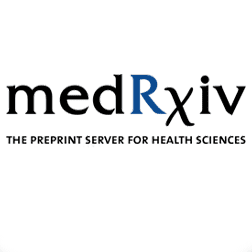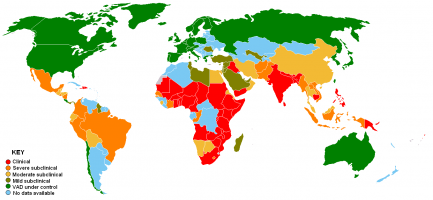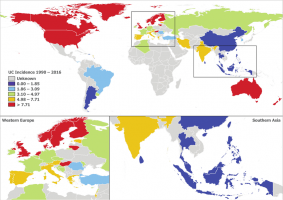Vinero
Member
I try to stay below 100 IU per meal. So if I eat three meals a day it means 300 IU is the upper limit for me. But to be fair, I have no idea how much vitamin A my beef contains. I have no idea how much vitamin A is in my apples. Some apples might contain only 50 IU per apple. Other apples might contain 300 IU per apple. You have to look at the color of the flesh. If it's white there's no carotenoids. The more yellow or orange it is the higher the carotenoid content. Only choose apples that are white-flesh after you peel them. Don't eat apples that seem yellowish. The same rules apply for potatoes. Only buy varieties of potato that are white-flesh.. No yellow-flesh potatoes. Purple-flesh potatoes and fruit are fine since the purple color is caused by anthocyanins not carotenoids. Anthocyanins are anti-oxidants so they may be helpful to inhibit excessive retinoic acid production. Also try to avoid fatty cuts of meat were the fat seems yellowish/orange.Hello
I have no time to read this 374 page topic
But u have read a lot of positive experience about people that are following a low vit a diet and i want to give it a shot.
One problem, everybody talk about low vit a intake but nobody talk about exact numbers.
So my question is: when you talk about low, what is the limit intake then?
We never know exactly how much vitamin A is in foods. All we can do is eat those foods that in theory are lowest in vitamin A, and that don't make us feel worse after eating them. For me this includes things like rice (white or brown), potatoes (white or purple flesh), white bread, apples, lean beef, turkey breast, almonds, macadamia nuts, mushrooms, black beans, and white beans.
I have also experimented with whole grains like oats, barley, whole wheat, spelt, buckwheat, rye, and also lentils. If you look up these foods they seem safe since they are low in vitamin A. But I get dry eyes and my energy levels get lower when I eat those foods on a daily basis. I don't think whole grains are appropriate for the low vitamin A diet, except brown rice.
Last edited:




